Indiana is one of the states in the United States with the highest tourist attraction and is home to a population of over six million people.
The state is well known for its rich agriculture, massive farmlands, and abundant supply of corn. Its natural habitats also provide a home to vast wildlife.
Many animals that inhabit Indiana might seem gentle and lovely, but some of them are extremely dangerous and capable of inflicting injuries or even killing humans. They include poisonous spiders, venomous snakes, bugs, deer, etc.
This article gives insights into twelve of the most dangerous animals in Indiana you should beware of when exploring the wildlife in the area and some safety tips.
Each of these creatures differs based on their degree of lethality.
What are the Most Dangerous Animals in Indiana?
1. Black Widow Spider

- Scientific name: Latrodectus mactans
- Classification: Arachnida
- Habitat: Wood piles, low shrubs, and majorly dark undisturbed areas
- Diet: Carnivores
- Conservation Status: Fairly common
Black widow spiders are renowned venomous arachnids whose size is about half an inch long. They don’t look intimidating based on their size but undoubtedly look scary at first sight.
The females are known for a unique colored mark on their abdomen, shaped like an hourglass. They are fierce and even kill the male after mating.
A dose of their venom can prove lethal if left unattended because their venom contains a dangerous toxin called latrotoxin, which is fifteen times deadlier than the rattlesnake’s venom and capable of crippling the nervous system.
Symptoms that follow a black widow sting include chest pain, abdominal pain, nausea, general body weakness, vomiting, and fainting spells.
First aid measures for black widow spider spider sting include:
- Taking antihistamines (to combat adverse reactions due to allergy).
- Placing an ice pack over the injured site to reduce swelling and relieve itching.
Also, contact the nearest hospital around you to get shots of anti-venom.
2. Timber Rattlesnake
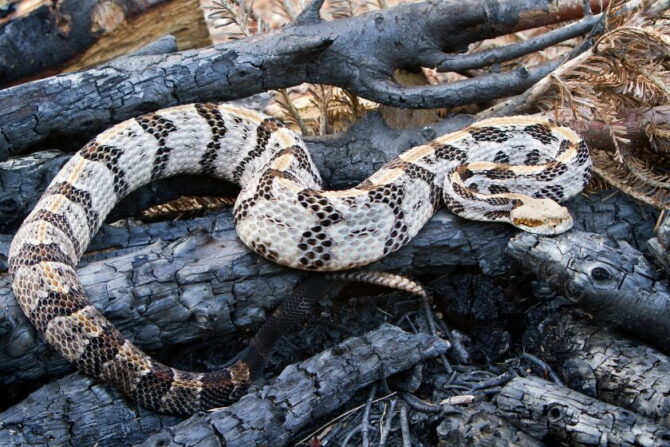
- Scientific name: Crotalus horridus
- Classification: Reptile
- Habitat: Wood piles, forests, marshy areas, and swaps
- Diet: Carnivores
- Conservation Status: Least Concern
The Timber Rattlesnake is also known as the canebrake or banded rattlesnake.
Their color varies from grey to pinkish-grey, and they have stripes that run along their back which could be yellow, pinkish, or orange.
These snakes are also excellent climbers who can reach the peak of trees about eight hundred meters high.
Another feature of this snake is its somewhat V-shaped head and pupils, which are vertical and oval.
This feature is significant in identifying venomous snakes, and the timber rattlesnake is no exception with its ability to kill a human being.
Although these snakes do not attack unless they feel threatened, their venom can destroy the walls of capillary blood vessels leading to severe internal bleeding.
Also, little can be done to save the victims’ lives once the poison gets to the heart. Other significant symptoms include lightheadedness, numbness in the feet or face, nausea, feeling faint, and immense pain.
Emergency measures that can help to save the victim’s life include:
- Encourage the victim to stay as calm as possible to prevent elevated heart rate because it can accelerate the spread of the venom.
- Remove any tight clothing, and keep the wounded region clean and free from possible infection.
- Call an emergency number, or rush the victim to the nearest hospital for anti-venom shots.
3. Copperhead Snake
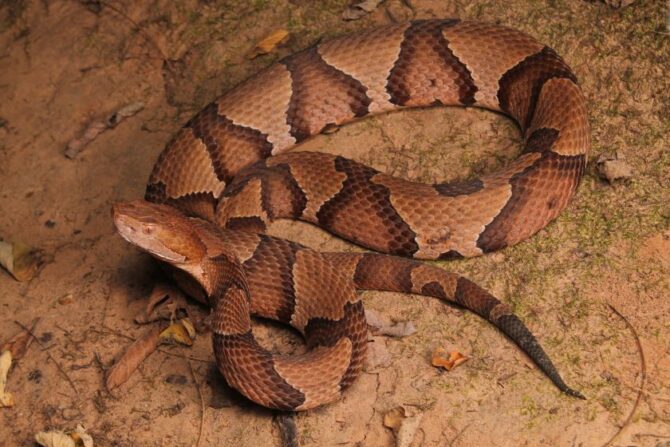
- Scientific name: Agkistrodon contortrix
- Classification: Reptile
- Habitat: Wood piles, forests, marshy areas, and swaps
- Diet: Carnivores
- Conservation Status: Not Extinct
The copperheads are muscular thick-bodied snakes with heads modified into a V-shape significant to venomous snakes, and they also have vertical and elliptical pupils.
They are stout, with colors ranging from reddish-brown to copper colored.
Threatening a copperhead snake prompts it to release an odor that smells a little similar to cucumbers coupled with feces.
This warning signal prepares the snake for a possible attack and wouldn’t hesitate to lunge after it’s the victim.
The toxin from its venom can paralyze a person almost immediately, and death would follow within thirty minutes.
In case one falls victim, avoid cutting open the wound site or trying to suck out the venom.
Also, avoid raising the affected limb beyond heart level and encourage the victim to maintain a steady breathing pattern.
4. Brown Recluse Spider
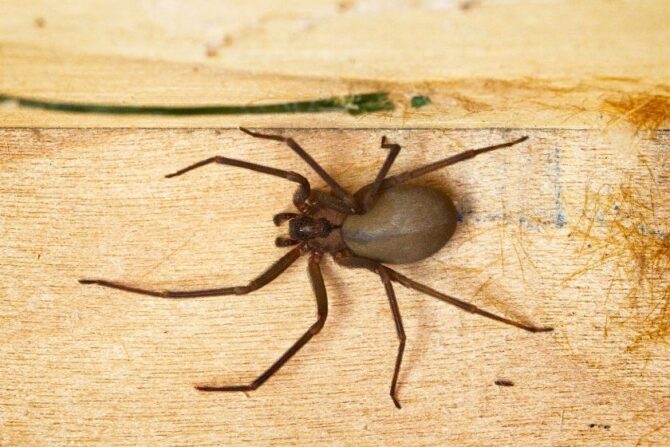
- Scientific name: Loxosceles reclusa
- Classification: Arachnid
- Habitat: Mostly in human habitations with low humidity, which include crevices, sheds, ceilings, woodpiles, etc.
- Diet: They feed on small insects, and they are cannibalistic.
- Conservation Status: Well-distributed
The brown recluse spiders are identified by their long thin legs, body length of about 2.5 to 3.5 centimeters, abdomen of uniform color except for the presence of a unique black violin-shaped marking, and a semicircular cluster of six eyes.
These spiders are usually not violent but rather attack when they sense danger.
Incidence reports claim these creatures bite when they get trapped on bare skin, thereby warranting a sting.
The sting is primarily painless, but after about three to five hours, it becomes reddish, gives off a burning sensation, and turns into a necrotic blister.
5. Eastern Massasauga Rattlesnake
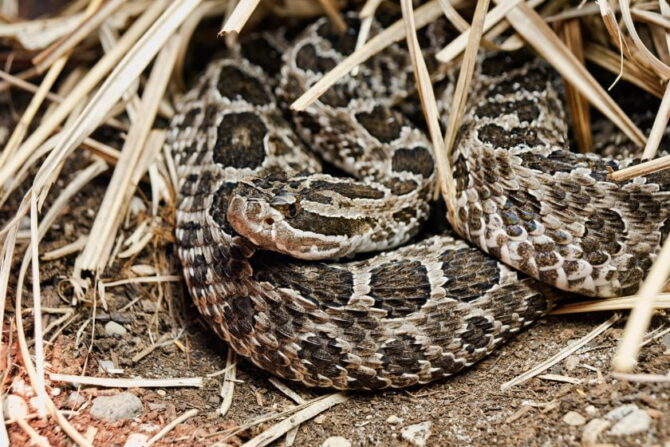
- Scientific name: Sistrurus catenatus
- Classification: Reptile
- Habitat: Meadows, marshes, and majorly riverine areas
- Diet: Carnivorous
- Conservation Status: Not Extinct
The eastern massasauga is a small to medium-sized, muscular, brown, or grey-brown snake.
It is characterized by a unique color pattern of dark to brown freckles running down its back and two to three more rows of dark spots along its back and the sides of its body.
The dorsal surface of the snake is black with some light freckles.
Another unique characteristic of this rattlesnake is the presence of dense keratin at the end of the tail, used to avoid threats.
The rattlesnake has poisonous teeth modified as fangs used to inject a lethal venom into the body of its victim.
It would be best if you did not ignore emergency measures after a negative encounter with these serpents due to the lethality of their venom.
6. Western Cottonmouth Snake

- Scientific name: Agkistrodon piscivorus
- Classification: Reptile
- Habitat: Semiaquatic areas
- Diet: Carnivorous
- Conservation Status: Least Concern
Cottonmouth snakes are also known as water moccasins because they thrive well in the aquatic habitat and are venomous vipers of Indiana.
The presence of a white coloration inside of their mouths accounts for their name, and they display this unique feature when threatened.
They can detect heat energy around them using unique sensory pits between their eyes and nostrils.
This feature gives them the ability to strike their victim with perfect accuracy.
Though they rarely bite, except when provoked, their venom is potent enough to enzymatically destroy the body’s tissue, causing necrosis, bleeding, and shock.
7. Kissing Bug

- Scientific name: Triatominae
- Classification: Hemiptera
- Habitat: Cracks, holes, cellars, etc.
- Diet: Carnivorous.
- Conservation Status: Not Extinct
Kissing Bugs are not particularly as pleasant as their name sounds.
They are known to bite their prey on their face or near the mouth hence their name.
Unique features of the kissing bug include:
- A cone-shaped head.
- An oval body with light brown to black color.
- Orange to red stripes along the sides of its body.
Kissing Bugs are nocturnal, which means they come out only at night to feed when people are sleeping.
Their biting or feeding mechanism involves injecting saliva with anesthetic properties into the site to ensure uninterrupted feeding, which lasts between twenty to thirty minutes.
These bugs are potential carriers of transmittable diseases, peculiarly “Chagas disease.”
The skin around the bite is at risk for inflammation, allergic reactions can occur, and shock results from a drop in blood pressure.
8. Deer

- Scientific name: Cervidae
- Classification: Mammals
- Habitat: Terrestrial
- Diet: Herbivores
- Conservation Status: Endangered species
Deers are lovable, timid, and shy social animals that walk in herds. They also have an excellent sense of smell.
The white-tailed deer (Odocoileus virginianus) is the only representative of the family Cervidae in Indiana, which includes mule deer, elk, and moose.
Deers are part of the list of the most dangerous Indianian animals because they are capable of causing moderate to severe road traffic accidents.
Annually, more than 14,000 dear-vehicle crashes are reported in Indiana.
9. Mountain Lions
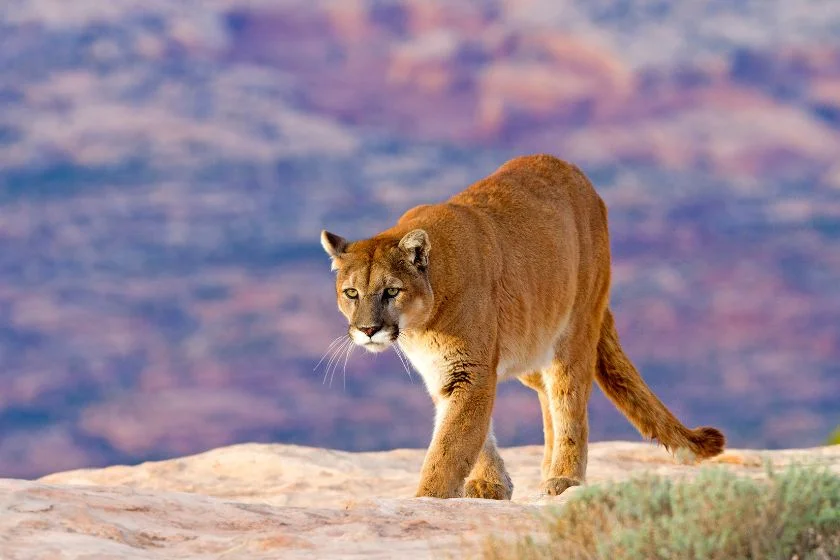
- Scientific name: Puma concolor
- Classification: mammals
- Habitat: Commonly found living in rocky places or mountains.
- Diet: Carnivores.
- Conservation Status: Least Concern
Mountain Lions are large cat species inhabiting most of the plains of America.
Mountain lions are huge, light brown to tan cats. Black markings fill the tip of the ears, snout, and tail.
They have retractable claws and cannot roar as fiercely as it looks; instead, it gives out a hiss or soft purrs.
Mountain lions are relatively silent predators, hunting for their prey mostly at night and often patiently waiting for a game or stealthily stalking it before attacking from behind and giving a lethal bite to the spinal cord.
10. Asian Needle Ants
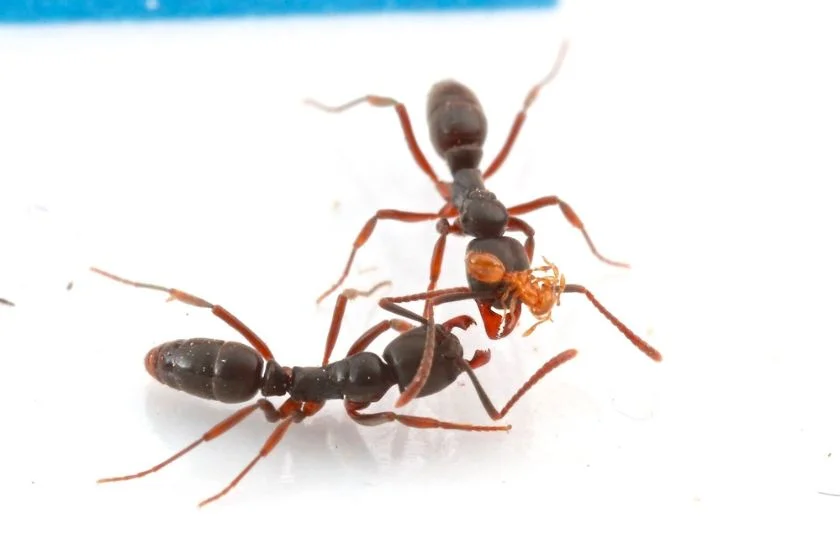
- Scientific name: Brachyponera Chinensis
- Classification: Arthropoda
- Habitat: Under rocks, inside logs, and in forest areas
- Diet: Carnivores
- Conservation Status: No special status
These are dangerous invasive ants that Indiana’s insect experts recently discovered.
They are roughly half an inch long with colors ranging from light brown to jet black and have a reddish stinger.
Research has shown that an Asian needle ant sting is more likely to cause an allergic reaction than a honey bee’s sting.
Asian Needle Ants are less aggressive than fire ants and will only bite when they feel pressure. Its sting can be excruciating and cause severe allergic reactions.
Prolonged effects can lead to a potential drop in blood pressure, poor heart rate, and poor respiratory rate.
11. Coyotes
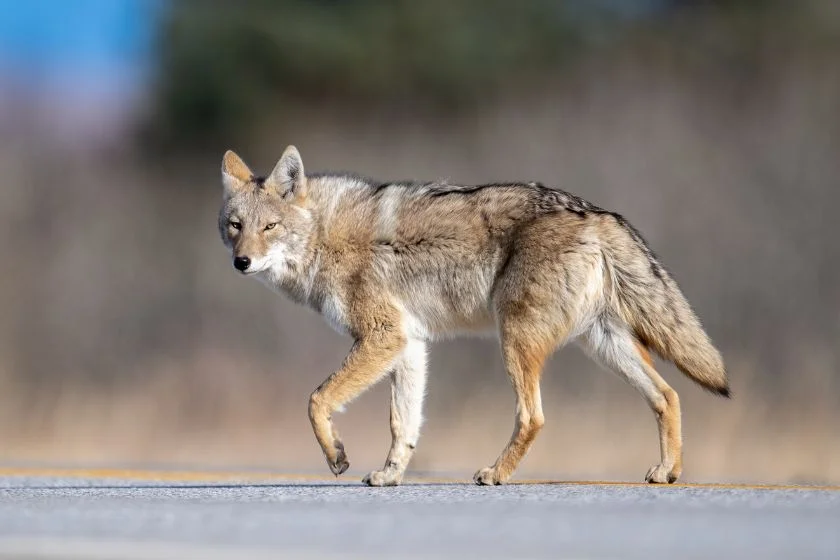
- Scientific name: Canis latrans
- Classification: Mammals
- Habitat: Open areas and desert areas
- Diet: Carnivores
- Conservation Status: Least Concern
They are similar to wolves but smaller in size. They have pointy muzzles, long bushy tails, and thick coats, a mixture of brown, tan, and black.
Coyotes are social animals known to mark their territory using their urine.
Coyote attacks on humans have low incidence reports, but they see pets, especially cats, as a potential threat.
When you encounter a coyote, remember to stay completely calm and avoid running while retreating slowly and steadily because running will trigger the animal to chase and attack you.
12. Bobcats
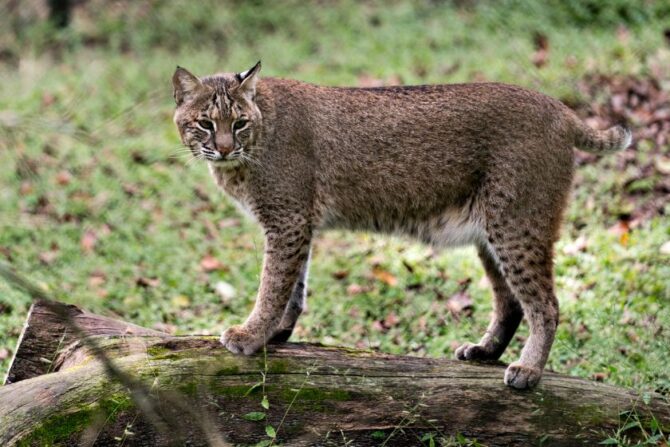
- Scientific name: Lynx rufus
- Classification: Mammals
- Habitat: Forest, coastal swamps, and desert areas
- Diet: Carnivores
- Conservation Status: Least Concern
Bobcats are similar to typical household cats and are about twice the size of cats.
They have large ears, large paws, and thick furs. They can only pose a severe threat if infected with rabies.
Bobcat infected with rabies tend to behave illogically and aggressively towards anyone around them.
Indiana’s Wildlife Safety Tips
While in Indiana, specific rules or safety tips can prevent you from getting into trouble with the wildlife if you strictly adhere to them.
They include:
- Read extensively on Indiana’s wildlife population. Explore several materials, articles, editorials, incidence reports, and other people’s experiences before taking a tour of Indiana’s wildlife.
- When touring wildlife attractions in Indiana, look out for animal trials and drop in a bid to inform yourself of possible danger.
- In an encounter with wildlife, never opt for running. Remain calm and talk slow steps backward without startling the animal.
- Always resist the urge to feed an animal because they can mistake humans for food, thereby making a lethal lunge at the individual.
- Avoid using headphones so you can be on alert. Also, you can get a pair of binoculars to safely observe wildlife from a reasonable distance.
Frequently Asked Questions
What animal is the deadliest in Indiana?
Surprisingly, Indiana’s most dangerous animals are not snakes, sharks, or coyotes.
Deers in Indiana are the deadliest animals as they are responsible for most deaths in the state by jumping in front of speeding cars and causing accidents and wrecks.
What are the poisonous snakes in Indiana?
The poisonous snakes found in Indiana are; the Copperhead, the cottonmouth, and the Eastern Massasauga rattlesnake.
Are there mountain lions in Indiana?
During the 1800s, mountain lions were extirpated from Indiana. Currently, there is no breeding population for these wild animals.
What are some wild animals in Indiana?
Some of the wild animals in Indiana include the coyote, red fox, striped skunk, squirrels, bobcat, beaver, and more.
Conclusion
Exploring the plains of Indiana is exhilarating, with something new to see and know every day.
In the quest to experience something thrilling, please do not ignore the prevalence of dangerous predators.
For your safety, Keep your distance from these most dangerous animals in Indiana and follow every guideline.






